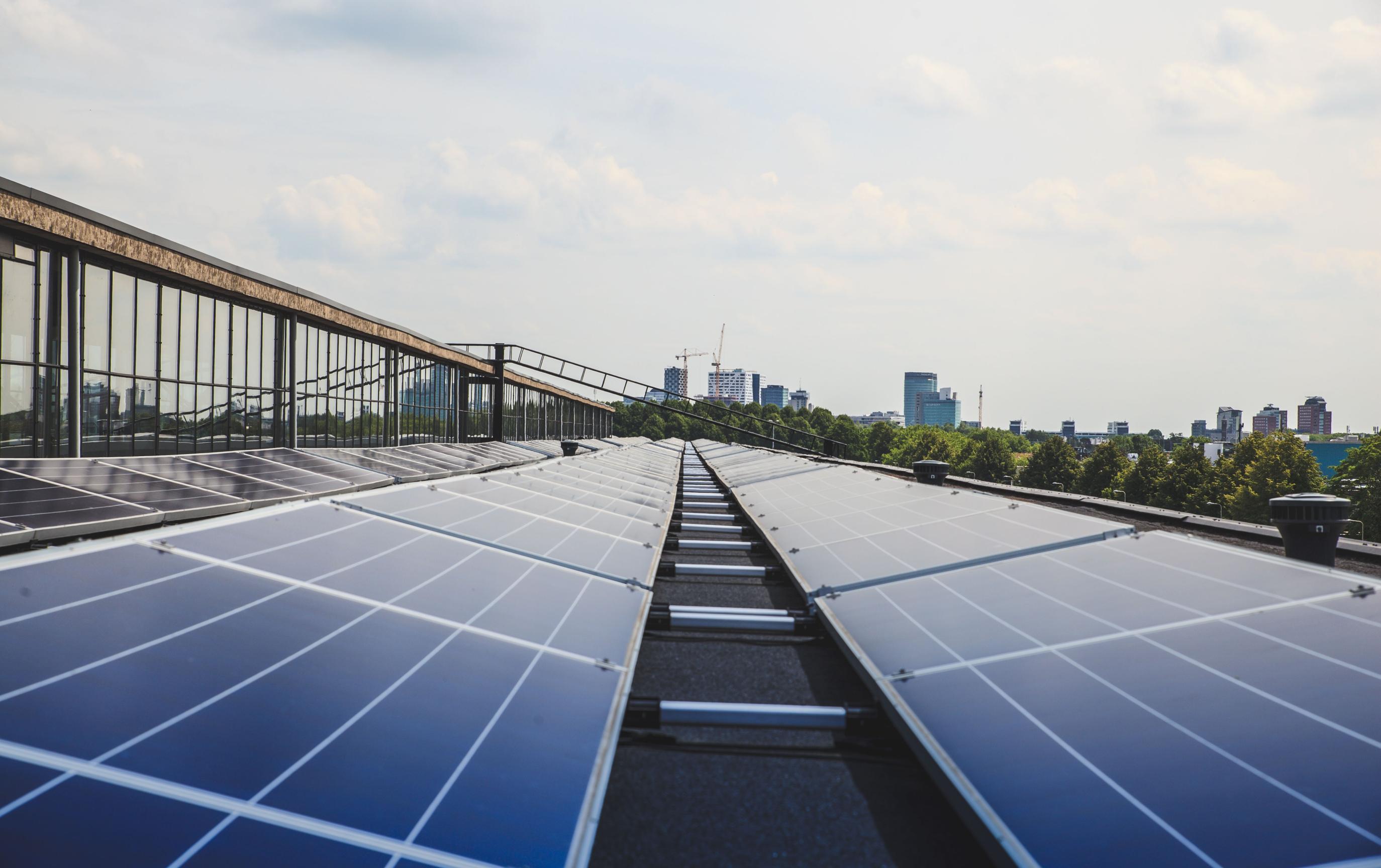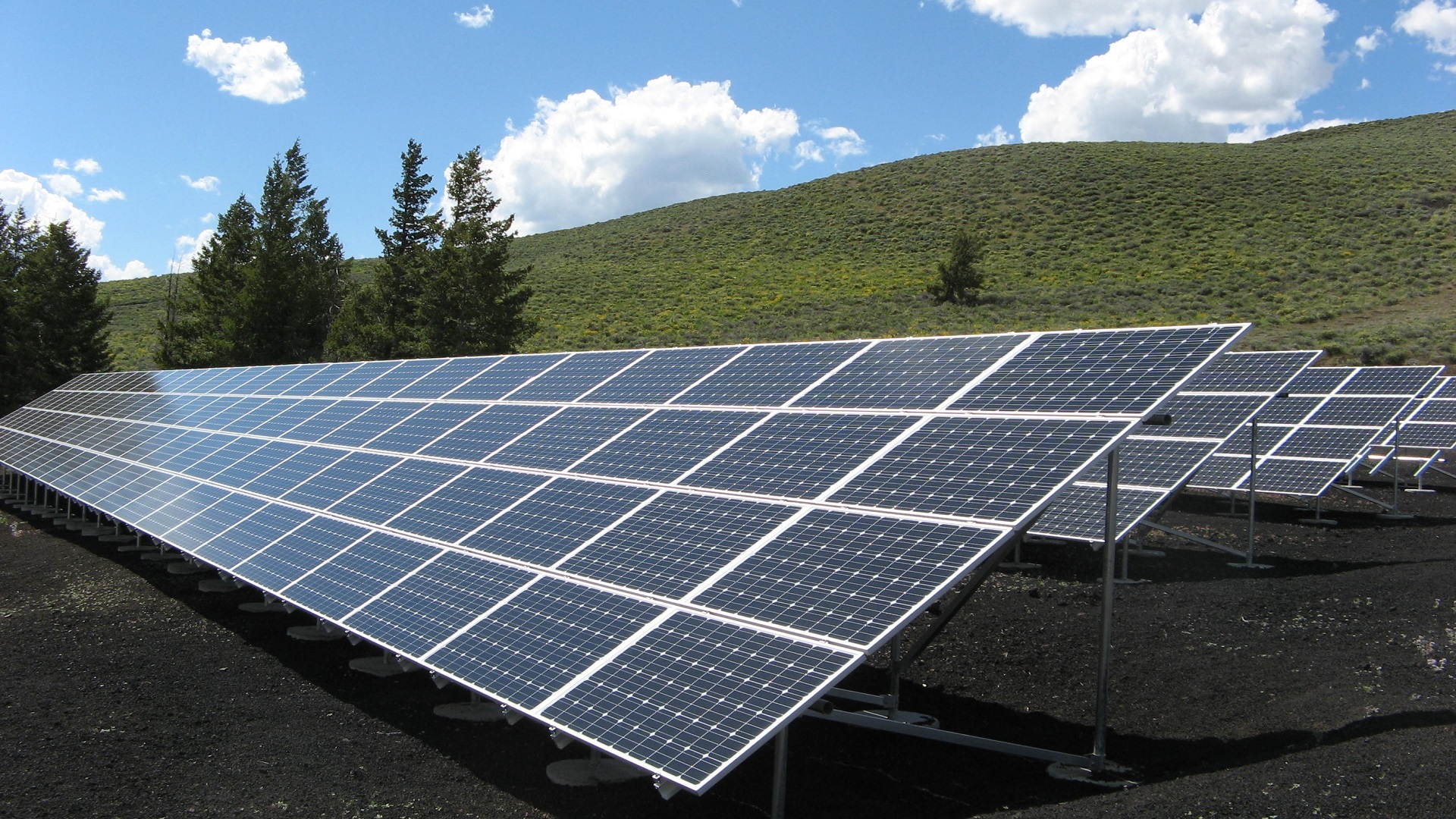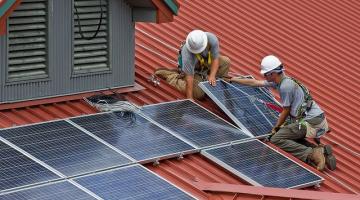Scope 2 Frequently Asked Questions
Disclaimer: These responses are meant to be helpful but are not intended to be the final word on how to interpret GHG Protocol standards. For the authoritative source, please refer to the relevant GHG Protocol standards. Neither WBCSD, WRI, nor other individuals who contributed to this response assume responsibility for any consequences or damages resulting directly or indirectly from its application in a specific use case.
Table of Contents
2. What is the emission factor for renewable energy?
5. What if I don’t make specified renewable energy purchases – do I still have to do dual reporting?
6. What exactly do I need to report about my electricity purchases?
7. How should my company account for electricity-related emissions from co-located data centers?
1. How are emissions from purchased electricity calculated using a market-based mechanism (e.g. PPA, energy attribute certificate (EAC))?
Chapter 6 of the Scope 2 Guidance provides calculation guidance, including how to account for PPAs. Table 6.5 offers calculation examples for the market-based method.
2. What is the emission factor for renewable energy?
Renewable energy, such solar, wind, geothermal, and hydropower, have no direct emissions at the point of electricity generation, and therefore use an emission factor of zero in scope 2. Nuclear-generated electricity is also carbon-free at the point of generation. While electricity generated from biogenic resources such as biomass, biofuels and biogas can be considered renewable, these electricity generation resources are not zero emissions at point of combustion. Based on the Corporate Standard, any CH4 or N2O emissions from biogenic energy sources use shall be reported in scope 2, while the CO2 portion of the biofuel combustion shall be reported outside the scopes.
3. We operate in a deregulated power market and have contracts with electricity providers. However, these are simply agreements on price/kWh, not PPAs for specific quantities of electricity or source of energy. To calculate a market-based scope 2 total, can we use a grid-average emission factor?
Companies with any operations in markets providing product or supplier-specific data in the form of contractual instruments shall report scope 2 emissions in two ways and label each result according to the method: one based on the location-based method, and one based on the market-based method. This is also termed “dual reporting.” For example, in the U.S. grid-average emission factor data from a source such as the U.S. EPA eGRID database should be used for the location-based method. However, for the market-based method, you must first understand whether product- or supplier-specific emission factor data is available through your utility or energy provider. If no product or supplier-specific data is available, you should inquire whether your supplier or local grid balancing authority provides residual mix data. Only in the absence of product- or supplier-supplier specific and residual mix data should you use grid-average emission factor data from a source like eGRID to account for market-based scope 2 emissions. Please refer to Table 6.2 (Location-based method emission factor hierarchy) and Table 6.3 (Market-based scope 2 data hierarchy examples) in the Scope 2 Guidance for more details on data hierarchy examples.
Please be advised that as of 2023, the GHG Protocol has begun a process to revise the Scope 2 Guidance. As a first step, GHG Protocol collected stakeholder input to understand the need, scope, and potential approaches to inform updates or additional guidance related to GHG Protocol’s Corporate Standard, Scope 2 Guidance, Scope 3 Standard, and supporting documents. The topic of scope 2 market-based emissions is anticipated to be an important topic during the review and revision process. Stakeholder feedback on this issue is summarized in the Detailed Summary of Responses from Scope 2 Guidance Stakeholder Survey. For more information on this process, please refer to the information on our website and subscribe to our email list to get updates on this process including opportunities to participate and provide inputs.
4. What should I ask my electricity supplier about? I’m not sure about the emissions numbers my supplier gave me.
Electricity suppliers may calculate a fuel mix and related GHG emissions using different methods and parameters, following different regulatory requirements. Criteria 6 of the Scope 2 Quality Criteria identifies key features and methods that supplier-specific emission factors need to have to be used in calculating a consumer’s scope 2 market-based emissions.
For more information on the market-based method hierarchy, see Scope 2 Guidance Chapter 6 (Calculating Emissions). For more information on the Scope 2 Quality Criteria and residual mixes, see Chapter 7 (Accounting and Reporting Requirements).
5. What if I don’t make specified renewable energy purchases – do I still have to do dual reporting?
If your organization operates in any region where product- or supplier-specific data is accessible, then you must report both location-based and market-based scope 2 emissions. The market-based method identifies a hierarchy of different types of contractual instruments from which emission factors can be derived. Contractual instruments include any type of supplier-provided GHG emission data or contract that meets the Scope 2 Quality Criteria, including contracts for energy purchased from natural gas, coal or nuclear plants, not only green power or specific-supplier tariffs. If you don’t have access to any of these data, you can use a residual mix (if available) or grid-average emission factors that you also use in calculating location-based scope 2 emissions. If the latter option is used, the two scope 2 totals will be identical. This could change as residual mix data becomes more widely available.
For more information on the market-based method hierarchy, see Scope 2 Guidance Chapter 6 (Calculating Emissions). For more information on the Scope 2 Quality Criteria and residual mixes, see Chapter 7 (Accounting and Reporting Requirements).
Please be advised that as of 2023, the GHG Protocol has begun a process to revise the Scope 2 Guidance. For more information on this process, please refer to the information on our website and subscribe to our email list to get updates on this process including opportunities to participate and provide inputs.
6. What exactly do I need to report about my electricity purchases?
The Scope 2 Guidance requires companies to disclose the categories of instruments from which the emission factors were derived and, where possible, specify the energy generation technologies. This means disclosing the instruments on the market-based method hierarchy. In the top category of “certificates,” for instance, companies should disclose whether it is unbundled energy attribute certificates (EAC) purchases (e.g., RECs, GOs, REGOs, I-RECs, etc.), EACs conveyed through a power purchase agreement (PPA), or EACs conveyed to consumers via a supplier-specific emission rate or program. Companies also must indicate that the Scope 2 Quality Criteria have been met for the instruments used in the calculation.
For more information on reporting requirements, see Scope 2 Guidance Chapter 7 (Accounting and Reporting Requirements.) For a discussion of recommended disclosure about corporate energy purchases and their policy context, see Chapter 8 (Recommending Reporting on Instruments Features and Policy Context).
7. How should my company account for electricity-related emissions from co-located data centers?
Electricity-related emissions occurring at co-located data centers can be complex, and various approaches exist to account for and categorize these emissions. For background, two types of electricity load can be distinguished for co-located data centers: 1) operational electricity used to run servers owned or leased by customers of the data centers (often referred to as IT load), and 2) overhead electricity used to operate lights, cooling systems, and other electricity-consuming aspects of a data center.
The question of where these emissions should be categorized may come down to each entity’s consolidation approach used to define the organizational boundaries of their inventory. Chapter 3 of the Corporate Standard describes three consolidation approach options: equity share, financial control, and operational control.
Under an operational control approach, a data center vendor could also claim only overhead electricity as their scope 2, while the client could account for those emissions in scope 3. Concurrently, the client could account for the emissions from the operational electricity used to run the equipment they lease as scope 2, while the vendor accounts for those emissions in scope 3. In this scenario, double counting of emissions within the same scope could be avoided.
Ultimately, data center operators and customers are encouraged to cooperate as to avoid situations where emissions from some aspect of data center operations are double or undercounted, for example in both of their scope 2 inventories, or omitted from both inventories entirely. That said, due to the complexity of inventory boundaries between companies, no concrete rules exist for accounting for emissions from co-located data centers.
Please be advised that as of 2023, the GHG Protocol has begun a process to collect stakeholder input to understand the need, scope, and potential approaches to inform updates or additional guidance related to GHG Protocol’s Corporate Standard, Scope 2 Guidance, Scope 3 Standard, and supporting documents. The topic of leased assets and co-located data centers is anticipated to be an important topic during the review and revision process. Stakeholder feedback on this issue is covered in Section H.2. in the Detailed Summary of Responses from Scope 2 Guidance Stakeholder Survey. It is also covered in the draft Detailed Summary of Responses from Corporate Standard Stakeholder Survey in Section C.8, and also noted in Sections B.3, B.5, B.6, B.7, and C.3. For more information on this process, please refer to the information on our website and subscribe to our email list to get updates on this process, including opportunities to participate and provide inputs.
8. Is electricity purchased by a landlord and passed through to the tenant(s) as a reimbursable expense always classified as scope 2 emissions?
Emissions from electricity consumed in a leased asset, such as an office building leased by a tenant, may be classified as scope 2 or scope 3 emissions depending on the consolidation approach taken by the reporting company, and depending on the manner of the lease arrangement. Under the equity share, financial control, and operational control approaches defined in Chapter 3 of the Corporate Standard a company sets its organizational boundary and may determine that a leased asset falls within that boundary or outside of it. If the asset falls within the company’s boundary, emissions from purchased electricity shall be reported in scope 2.
Further, section 5.2.1 of the Scope 2 Guidance states: “As noted in the Corporate Standard and its supplemental Appendix F (available at ghgprotocol.org), all leases confer operational control to the lessee or tenants, unless otherwise noted. Therefore, if a company is a tenant in a leased space or using a leased asset and applies the operational control approach, any energy purchased or acquired from another entity (or the grid) shall be reported in scope 2.” Table A.1 and Table A.2 (shown below) from Appendix A of the Scope 3 Standard provide additional guidance to identify emissions associated with leased assets. Refer to Appendix A (adapted from Appendix F in the Corporate Standard) of the Scope 3 Standard for additional information and guidance.
Table [A.1] Leasing agreements and boundaries (lessee’s perspective)
| Type of leasing arrangement | ||
| Finance/capital lease | Operating lease | |
| Equity share or financial control approach used | Lessee has ownership and financial control, therefore emissions associated with fuel combustion are scope 1 and use of purchased electricity are scope 2. | Lessee does not have ownership or financial control, therefore emissions associated with fuel combustion and use of purchased electricity are scope 3 (Upstream leased assets). |
| Operational control approach used | Lessee has operational control, therefore emissions associated with fuel combustion are scope 1 and use of purchased electricity are scope 2. | Lessee does have operational control, therefore emissions associated with fuel combustion at sources in the leased space are scope 1 and use of purchased electricity are scope 2.* |
*Some companies may be able to demonstrate that they do not have operational control over a leased asset held under an operating lease. In this case, the company may report emissions from the leased asset as Scope 3 as long as the decision is disclosed and justified in the public report.
Table [A.2] Leasing agreements and boundaries (lessor’s perspective)
| Type of leasing arrangement | ||
| Finance/capital lease | Operating lease | |
| Equity share or financial control approach used | Lessor does not have ownership or financial control, therefore emissions associated with fuel combustion and use of purchased electricity are scope 3 (Downstream leased assets). | Lessor has ownership and financial control, therefore emissions associated with fuel combustion are scope 1 and use of purchased electricity are scope 2. |
| Operational control approach used | Lessor does not have operational control, therefore emissions associated with fuel combustion and use of purchased electricity are scope 3 (Downstream leased assets). | Lessor does not have operational control, therefore emissions associated with fuel combustion and use of purchased electricity are scope 3 (Downstream leased assets).* |
*Some companies may be able to demonstrate that they do have operational control over an asset leased to another company under an operating lease, especially when operational control is not perceived by the lessee. In this case, the lessor may report emissions from fuel combustion as scope 1 and emissions from the use of purchased electricity as scope 2 as long as the decision is disclosed and justified in the public report.
Please be advised that as of 2023, the GHG Protocol has begun a process to collect stakeholder input to understand the need, scope, and potential approaches to inform updates or additional guidance related to GHG Protocol’s Corporate Standard, Scope 2 Guidance, Scope 3 Standard, and supporting documents. The leased assets topic is expected to be important during the review and revision process. Stakeholder feedback on this issue is covered Section C.8, “Leased assets,” as well as Sections B.3, B.5, B.6, B.7, and C.3 in the Detailed Summary of Responses from Corporate Standard Stakeholder Survey, and Section H.2 “Leased assets” in the Detailed Summary of Responses from Scope 2 Guidance Stakeholder Survey. For more information on this process, please refer to the information on our website and subscribe to our email list to get updates on this process including opportunities to participate and provide inputs.
9. If a company reports zero scope 2 emissions using the market-based method, would its scope 3 category 3 T&D losses also reflect zero emissions?
Section 4.2 of the Scope 2 Guidance on the emission-rate approach says that scope 2 accounting methods use generation-only emission factors, which do not include T&D losses or upstream lifecycle emissions associated with the technology or fuel used in generation.
Appendix B of the Scope 2 Guidance states that the energy quantity consumed and reported in scope 2 serves as the basis for determining T&D activity data. One example of how this can be calculated is by applying the grid loss factor (ex: 7 percent grid loss rate for 100MWh consumption would mean 7MWh lost in T&D). Companies may also get information on line losses from the entity that controls the lines. Companies would need to apply an emissions factor to that line loss consumption to determine emissions associated with the loss. Companies should disclose which calculation method they are using to calculate and report T&D losses in scope 3 category 3, but do not need to “dual report” this. For instance, if companies, their suppliers, or other value chain partners have purchased energy attribute certificates to cover the quantity of grid losses, they can report this calculation based on the market-based method procedures in this Guidance. If not, companies should use the location-based method emission factors.
Companies should also disclose which scope 2 results— location-based or market-based—they are using as the basis for calculating upstream fuel extraction and processing emissions. For example, a scope 3 category 3 assessment based on the results of a location-based scope 2 report could reflect the upstream profile of the mix of grid resources (natural gas, coal). A category 3 assessment based on the results of a market-based scope 2 report could reflect the upstream emissions associated with producing renewable energy.
Please be advised that as of 2023, the GHG Protocol has begun a process to collect stakeholder input to understand the need, scope, and potential approaches to inform updates or additional guidance related to GHG Protocol’s Corporate Standard, Scope 2 Guidance, Scope 3 Standard, and supporting documents. The topic of market-based instrument use for T&D losses reported in scope 3 category 3, and associated issues, will be an important topic during the review and revision process. Stakeholder feedback on this issue is covered in the Detailed Summary of Responses from Scope 2 Guidance Stakeholder Survey, Section F.3. For more information on this process, please refer to the information on our website and subscribe to our email list to get updates on this process including opportunities to participate and provide inputs.
10. If a company generates renewable energy onsite (e.g., “behind the meter” rooftop solar photovoltaic or PV) and sells excess to the grid but also purchases energy from grid, can the company still claim zero-emissions from its electricity use because of the onsite generation?
Companies who are consuming energy directly from a generation facility that has sold certificates (either owned/ operated equipment or a direct line) forfeit not only the right to claim those emissions in the market-based method (requiring the use of some other market-based data source such as other “replacement” certificates, a supplier-specific emission factor, or residual mix) but also the right to claim that emissions profile in the location-based method. Overall, the location-based method is designed to show emissions from the production supporting the local consumption without reference to any contractual relationships. However, the attributes contained in certificates usually carry legally enforceable claims, which should take precedence.
In the market-based accounting method, to apply a zero-emission factor to electricity consumed, whether it is purchased from the grid or uses on-site resources, a company must retain ownership of and retire the energy attribute certificates (EACs) (e.g., RECs, GOs, REGOs, I-RECs, etc.) that it wishes to match to its load following the Scope 2 Quality Criteria. If the company generates excess renewable electricity and sells the electricity to the grid but wants to maintain the rights to the zero-emission attribute of the electricity it sold, it must not sell the EAC to other consumers/utilities. Thus, the utility may not count for the renewable generation in its own grid mix, but the company retiring the EAC can maintain its zero-emission claim.
For more information on accounting for scope 2 with and without certificate sales, see Scope 2 Guidance, Table 6.1, page 46.
11. My company requests payment from a logistics and transportation company when they charge their electric vehicles at our facilities. How do I account and report for those emissions?
If the reporting company is selling its electricity to the logistics and transportation company through electric vehicle charging, they are serving the same function as an energy retailer and would account for those emissions in scope 3, category 3 (Fuel-and energy-related activities not included in scope 1 or scope 2).
Please be advised that as of 2023, the GHG Protocol has begun a process to collect stakeholder input to understand the need, scope, and potential approaches to inform updates or additional guidance related to GHG Protocol’s Corporate Standard, Scope 2 Guidance, Scope 3 Standard, and supporting documents. The topic of electric vehicle charging, and overlap areas between scope 2 and scope 3, will be an important topic during the review and revision process. Stakeholder feedback on this issue is covered in the Detailed Summary of Responses from Scope 2 Guidance Stakeholder Survey, Sections F.5 and H.1. For more information on this process, please refer to the information on our website and subscribe to our email list to get updates on this process including opportunities to participate and provide inputs.
12. Can a hotel deduct the electricity from their carbon inventory that is associated with EV charging for guests?
Electricity purchased from the grid by a hotel, and utilized by hotel guests to charge EVs may be reported in the hotel’s scope 2 inventory, or in scope 3, category 3 (fuel-and energy-related activities not included in scope 1 or scope 2). If the hotel offers electricity free of charge to hotel guests (i.e., the electricity is purchased and consumed by the hotel for services it provides to its guests), it would report the emissions from that electricity in its scope 2. If the hotel sells the electricity to hotel guests, it would report emissions in scope 3, similar to the way an electric utility reports emissions from sold electricity.
Please be advised that as of 2023, the GHG Protocol has begun a process to collect stakeholder input to understand the need, scope, and potential approaches to inform updates or additional guidance related to GHG Protocol’s Corporate Standard, Scope 2 Guidance, Scope 3 Standard, and supporting documents. The topic of electric vehicle charging, and overlap areas between scope 2 and scope 3, will be an important topic during the review and revision process. Stakeholder feedback on this issue is covered in the Detailed Summary of Responses from Scope 2 Guidance Stakeholder Survey, Sections F.5 and H.1. For more information on this process, please refer to the information on our website and subscribe to our email list to get updates on this process including opportunities to participate and provide inputs.
13. My company rents office space but cannot obtain energy use or bills from the landlord. How can I calculate scope 2 emissions without this information?
While primary data, such as utility bills obtained directly from landlords, is the highest quality source of activity data, companies may estimate activity data using proxy factors. For example, if the total electricity consumption of an office building is known, electricity consumption may be allocated to tenants of the building based on their share of building floor space. Alternatively, companies may use average data, typically in the form of energy intensity metrics for certain building types or generate their own averages using existing electricity consumption and square footage data from other locations. For additional guidance on how to account for emissions from leased assets, see Appendix A in the Scope 3 Standard and Appendix D of the Scope 3 Calculation Guidance.
Please be advised that as of 2023, the GHG Protocol has begun a process to collect stakeholder input to understand the need, scope, and potential approaches to inform updates or additional guidance related to GHG Protocol’s Corporate Standard, Scope 2 Guidance, Scope 3 Standard, and supporting documents. The topic of leased assets is anticipated to be an important topic during the review and revision process. Stakeholder feedback on this issue is covered Section C.8, “Leased assets,” as well as Sections B.3, B.5, B.6, B.7, and C.3 in the Detailed Summary of Responses from Corporate Standard Stakeholder Survey and section H.2 “Leased assets” in the Detailed Summary of Responses from Scope 2 Guidance Stakeholder Survey. For more information on this process, please refer to the information on our website and subscribe to our email list to get updates on this process including opportunities to participate and provide inputs.
14. We lease office space and our landlord has purchased an energy attribute certificate (e.g. EAC, REC, GO, etc.) to cover the entire building’s electricity use. 1) Are we able to claim this energy use as renewable and what specific criteria should be met to do so credibly and 2) what kind of documentation should we obtain to be able to prove our right to claim this electricity as renewable?
If an entity purchases an EAC on behalf of another entity, it’s important to transparently document and report the retirement and allocation of EACs. For example, if a landlord purchases an EAC to cover 100% of the electricity demand in a facility they lease to multiple tenants, tenants seeking a claim on the renewable attribute of that energy would need to work with the landlord to document the allocation of the renewable electricity, demonstrating that the amount allocated does not exceed the amount purchased and that there is no double counting among landlord and tenants. Additionally, documentation should include information on quantity purchased; the source, location, and time period of the renewable electricity generation; any third-party certification of the EACs; and if relevant, for what purpose the EACs have been retired on behalf of another party (i.e., to cover a specific facility or arrangement with tenants). The documentation should allow tenant receiving the renewable electricity to confirm the EACs meet the Scope 2 Quality Criteria (see Table 7.1 and section 7.5 in the Scope 2 Guidance). For additional guidance on how to account for emissions from leased assets, see Appendix A in the Scope 3 Standard.
Please be advised that as of 2023, the GHG Protocol has begun a process to collect stakeholder input to understand the need, scope, and potential approaches to inform updates or additional guidance related to GHG Protocol’s Corporate Standard, Scope 2 Guidance, Scope 3 Standard, and supporting documents. The topic of renewable energy procurement on behalf of others, and overlap areas between scope 2 and scope 3, will be an important topic during the review and revision process. Stakeholder feedback on this issue is covered in the Detailed Summary of Responses from Scope 2 Guidance Stakeholder Survey, Section H.3. For more information on this process, please refer to the information on our website and subscribe to our email list to get updates on this process including opportunities to participate and provide inputs.





